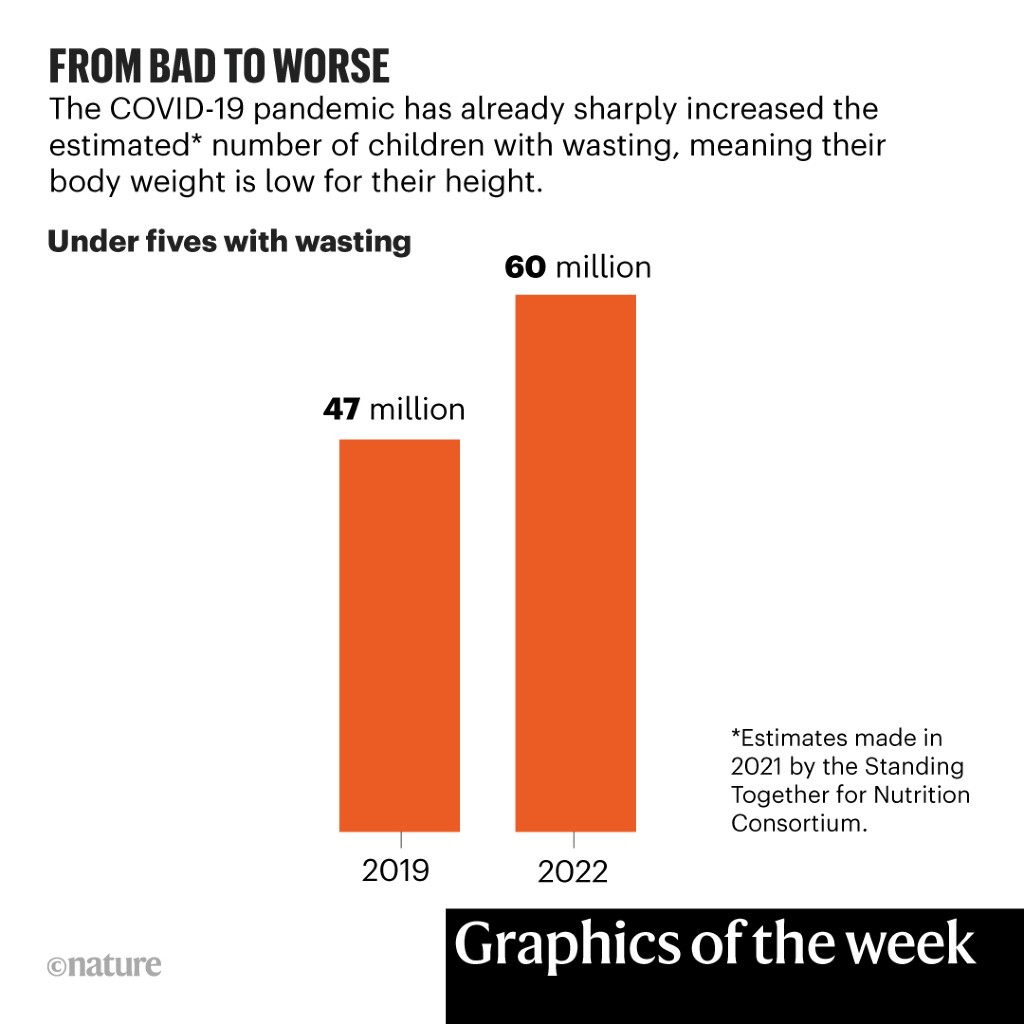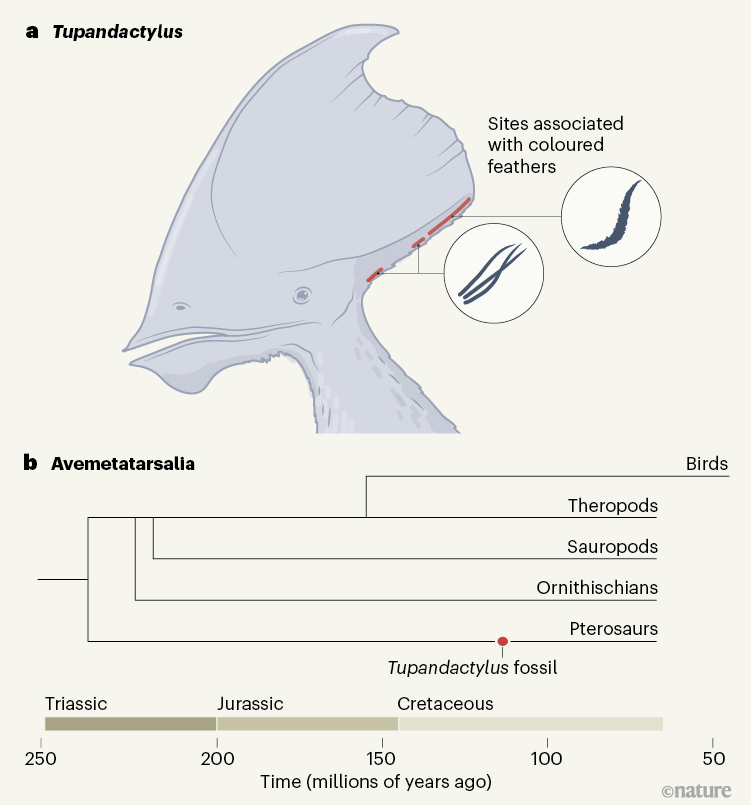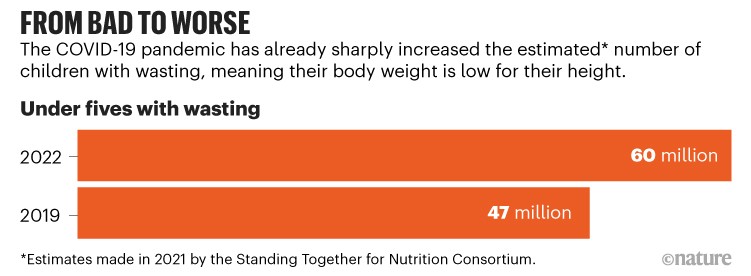The origin of feathers
The regal creature below is a Tupandactylus, a species of pterosaur. Pterosaurs were winged flying reptiles that were close relatives of, but distinct from, dinosaurs. It is known that dinosaurs had feathers — and a paper published this week in Nature confirms that pterosaurs possessed them, too.
The research team analysed a 113-million-year-old fossil of Tupandactylus and reported that the animal’s head had coloured feathers — including both whisker-like filaments and branched feathers (a). The feathers contained capsules called melanosomes, which harbour the pigment melanin. This indicates that the feathers were coloured — although, sadly, the specific colours are not known. This discovery, along with other findings, might mean that coloured feathers evolved in the Triassic period, when the clade Avemetatarsalia, which includes pterosaurs, birds and dinosaurs, originated around 250 million years ago (b). A News & Views article explains more.
Imagined writing
This graphic illustrates how scientists worked with Dennis Degray, who can speak but is paralysed from the neck down, so that he could write. As he imagines writing out a word — cat — a machine-learning algorithm learns to recognize patterns of neural activity that correspond to individual letters. Eventually, the algorithm can work out what other words he imagines writing. This News Feature examines advances in such brain–computer interfaces, and the many challenges involved in using them at scale.
Malnutrition surge
This rather depressing graph shows how the COVID-19 pandemic has increased the number of children under 5 years old with wasting by almost 30% over 3 years. Wasting, which is defined as a low weight relative to a person’s height, is the result of malnutrition. Many people already had inadequate diets due to conflicts, poverty and climate change. The authors of this Comment article call for action to prevent a worsening of the global food crisis precipitated by the war in Ukraine. Price hikes and disruptions in the trade of food, fertilizer and fuel threaten to further increase the global number of malnourished people.










More News
Editorial Expression of Concern: Leptin stimulates fatty-acid oxidation by activating AMP-activated protein kinase – Nature
Quantum control of a cat qubit with bit-flip times exceeding ten seconds – Nature
Venus water loss is dominated by HCO+ dissociative recombination – Nature